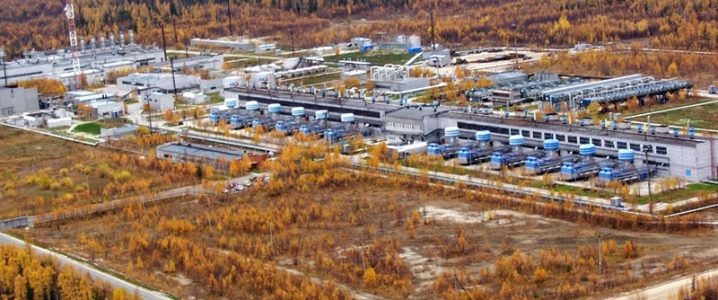
Amur gas processing plant
As the trade war between the U.S. and China intensifies, with an increase in tariffs on some $200 billion worth of Chinese goods from 10 percent to 25 percent and with another $300 billion worth of Chinese goods in the cross-hairs, Beijing has vowed to retaliate. On Monday, it announced it
will increase tariffs imposed on about $60 billion of U.S. goods in retaliation for what it sees as President Donald Trump's latest escalation of the trade war. The increased tariffs will take effect on June 1, according to a
statement on China's Ministry of Finance's website. The charges will be raised on most of the goods listed on a previous retaliation list effective last September.
"China's tariff move is in response to the U.S. unilateralism and trade protectionism," the ministry also stated on Monday in a different statement. "China hopes that the U.S. will return to the right track of bilateral trade talks, work together with China and meet each other halfway, to reach a win-win and mutually beneficial agreement on the basis of mutual respect."
Part of the increased tariffs will include U.S liquefied natural gas (LNG) imports, rising from a previous 10 percent levy to a damaging 25 percent starting June 1. The increase in tariffs already come as Chinese imports of the super-cooled fuel from the U.S. has plunged.
A Reuters report said that in 2018 some 27 LNG vessels traveled from the U.S. to China, down from 30 in 2017. Meanwhile, most of those that left U.S. ports last year did so before the trade war started, with 18 tankers going to China in the first half of the year and just nine during the second half.
Damaging developmentsNow that China is increasing LNG tariffs from 10 to 25 percent, these export numbers will drop even more, maybe even altogether. However, secondary traders will no doubt procure U.S.-sourced LNG and then resell it to China. Yet, that's little respite for major U.S. LNG producers in the long term if the trade war continues.
Not only will the trade war impact U.S.-Chinese LNG deals, but it will impact the overall global LNG market since the U.S. is the fastest growing LNG producer who could vie with Australia and even Qatar for the top LNG slot in terms of liquefaction capacity by the mid part of the next decade if only a fraction of the dozens of U.S. LNG project proposals go forward. However, that's the real quandary. Many of these projects aren't backed by cash-laden oil majors, like an Exxon Mobile or Chevron, but smaller players that need to sign long term off-take agreements with Chinese firms as well as secure funding from Chinese banks and financial institutions to finance their capex intensive projects.
Simply put, without both Chinese funds and Chinese gas demand, the so-called second wave of the U.S. LNG development story will stall, losing out to eager competitors, including Russia.Russian ambitionsIn lock step with the news that China is increasing tariffs on U.S. LNG, Russian natural gas giant
Novatek said on Monday that it expects to increase its LNG production capacity target to 70 million mt/year by 2030, up from a previous target of 57 million mt/year. "Our objective over the next year is to come up with a revision to 70 million mt/year by 2030, "company CFO Mark Gyetvay said. Previously, Novatek had said it aimed to have a production capacity of 57 million mt/year by that time. Novatek brought online its first 5.5 million mt/year LNG train at the three-train Yamal LNG facility in December 2017 and has since commissioned the second and third trains.
If Novatek achieves that production point, it could propel Russia to the third global LNG production slot, possibly passing the U.S. in the mid to later part of the next decade. Qatar and Australia are the current top LNG producers, while Qatar is ramping up production from a current 77 mtpa to 110 mtpa within the next five years.On the other hand, if the U.S. and China can resolve the current trade impasse, U.S. LNG production will distance itself from its Russian counterparts.
Reader Comments
to our Newsletter